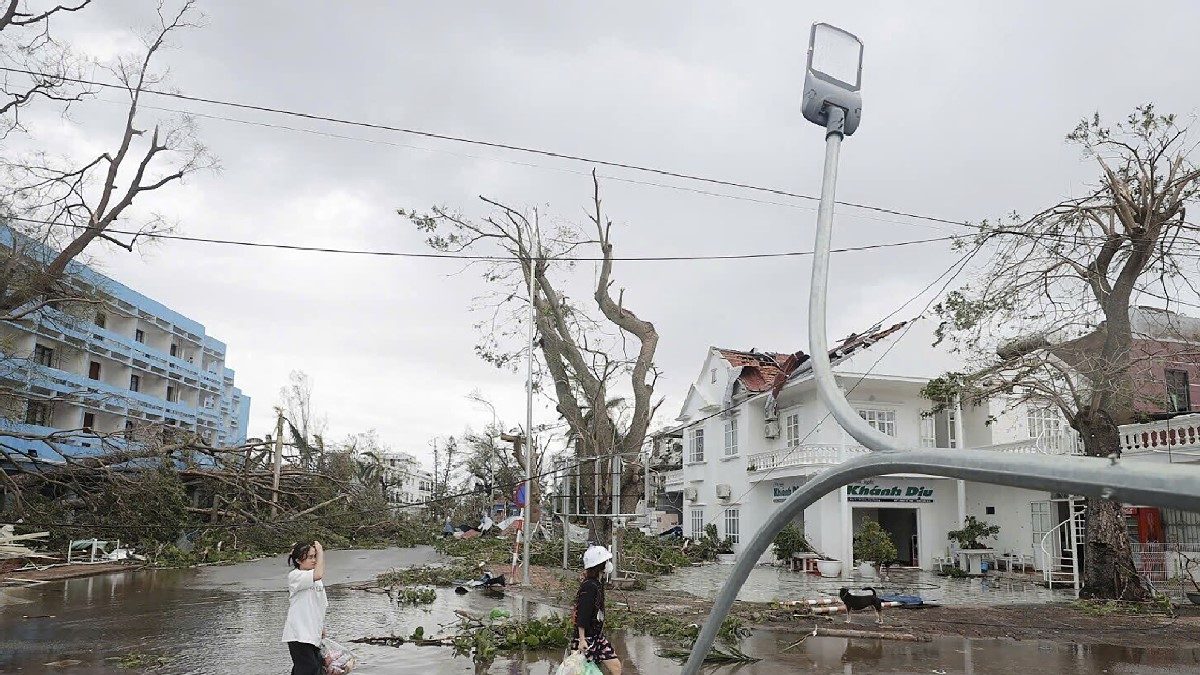Typhoon Yagi, a powerful storm that swept across Southeast Asia, has left a trail of devastation in its wake. From the Philippines to Vietnam, the typhoon’s strong winds, torrential rains, and landslides have resulted in numerous casualties, widespread damage, and widespread power outages.
The Impact of Typhoon Yagi in Vietnam
Typhoon Yagi made landfall in Vietnam’s northern coastal provinces of Quang Ninh and Haiphong with wind speeds of up to 149 kilometres per hour (92 miles per hour) on Saturday afternoon. The storm ravaged the region for approximately 15 hours, leaving behind a trail of destruction that included:
Casualties and Injuries
The storm claimed the lives of at least 14 people and left 176 others injured in Vietnam. The majority of these casualties were attributed to landslides, flooding, and structural collapses caused by the strong winds and heavy rains.
Power Outages
More than 3 million people in northern Vietnam were left without electricity after the storm damaged power infrastructure, including electrical poles and transmission lines. This widespread outage significantly disrupted daily life, impacting transportation, communication, and essential services.
Agricultural Losses
The storm caused substantial damage to vital agricultural land, affecting approximately 116,192 hectares where rice and fruits are primarily grown. This loss of agricultural production will likely have a significant impact on food security in the region, particularly for farmers and local communities who rely heavily on these crops for their livelihoods.
Transportation Disruptions
Hundreds of flights were canceled after four airports were forced to close due to the storm’s strong winds and poor visibility. Additionally, roads and bridges were blocked or damaged by landslides and flooding, hampering transportation networks and isolating communities.
The Continuing Threat
Even though Typhoon Yagi weakened into a tropical depression on Sunday morning, the danger did not completely dissipate. The meteorological department of Vietnam predicted heavy rainfall in northern and central provinces, warning of potential flooding in low-lying areas, flash floods in streams, and landslides on steep slopes. This threat highlighted the importance of preparedness and the potential for ongoing risks even after the storm’s immediate impacts subsided.
Response Efforts
The authorities in Vietnam have initiated emergency response measures to mitigate the storm’s effects. Municipal workers, along with army and police forces, are clearing debris, assessing damage, and providing assistance to those affected.
Clean Up Operations
Municipal workers in Hanoi, the capital of Vietnam, are clearing uprooted trees, fallen billboards, toppled electricity poles, and rooftops that were swept away. This task is a significant undertaking, demanding considerable resources and manpower to restore order and facilitate a safe environment.
Assessing Damage
Following the storm, authorities and engineers are working diligently to assess the damage to infrastructure, including buildings, roads, bridges, and power lines. This crucial step is critical for prioritizing repairs, ensuring public safety, and developing effective rebuilding plans.
Providing Assistance
Emergency services, including medical teams, are offering aid and support to those affected by the storm. This assistance includes providing medical treatment, food, water, and temporary shelter.
The Role of Climate Change
Benjamin Horton, the director of the Earth Observatory of Singapore, stated that storms like Typhoon Yagi are “getting stronger due to climate change.” He explained that warmer ocean waters provide more energy to fuel the storms, resulting in increased wind speeds and heavier rainfall. This connection between climate change and the intensification of tropical cyclones is a growing concern globally.
Take Away Points
- Typhoon Yagi caused significant damage and loss of life in Vietnam.
- The storm’s impact on the country’s agriculture and power infrastructure will require substantial efforts to rebuild.
- Climate change is exacerbating the intensity of storms, making them more powerful and destructive.
- Governments and communities need to prioritize measures to enhance preparedness and resilience to climate-related disasters.
- This event is a stark reminder of the urgent need to address climate change and its devastating consequences.




